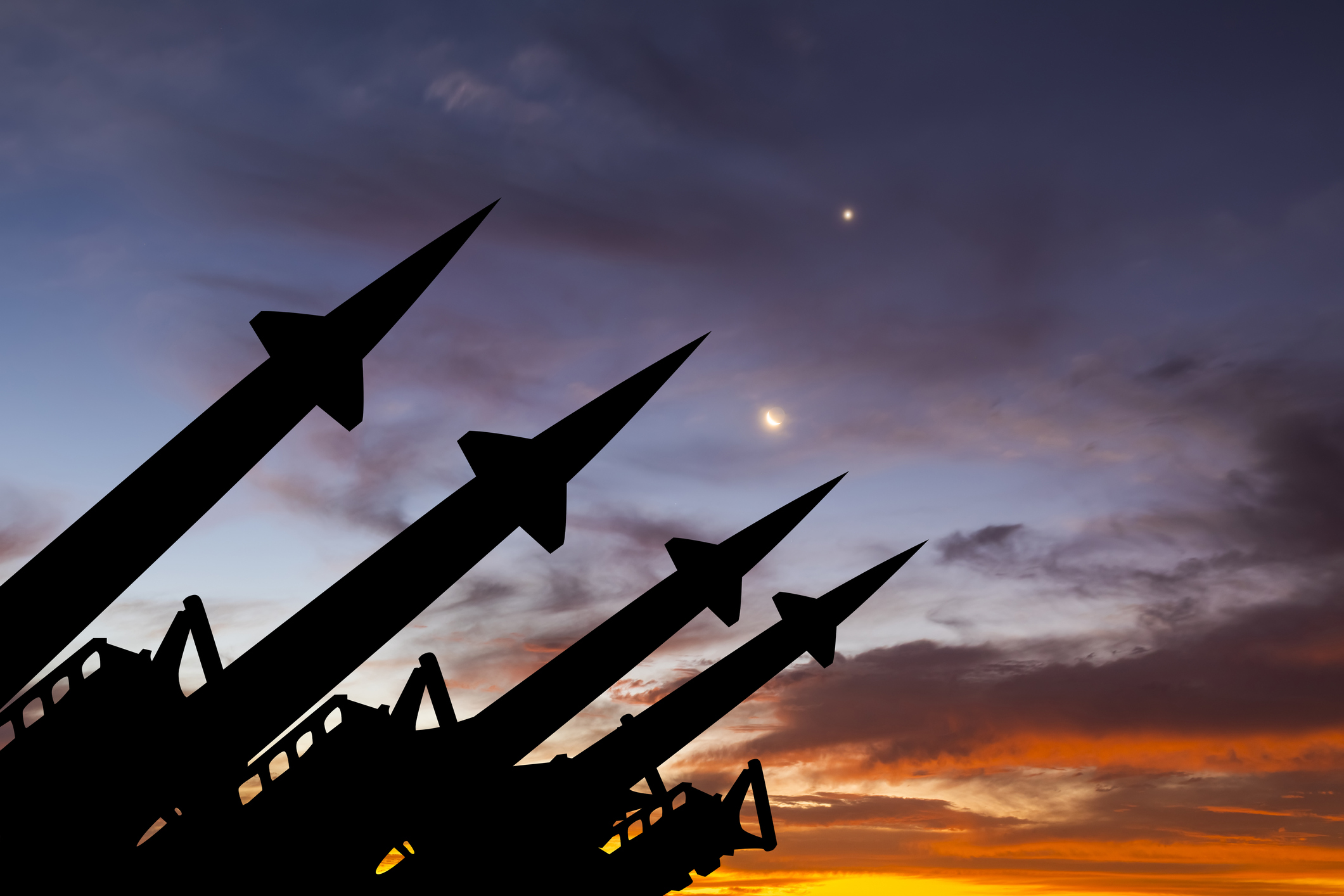What makes it worth being a man?
How to Defeat the CCP

Embracing Communist China was the U.S.’s greatest strategic failure.
From the U.S.’s disastrous retreat in Afghanistan and the war in Ukraine to the horrific terror attack on October 7 and the subsequent wars in the Middle East, the world has been thrown into chaos. This is to say nothing of the daily threats that the People’s Republic of China (PRC) is making in the Far East.
The causes of these problems are not found in Moscow, Tehran, Tokyo, or Taipei. Rather, they are the result of two fundamental and interrelated grand strategic mistakes made by the U.S.: 1) A failure to perceive the threat from the PRC, and 2) A failure to balance against it to defeat the PRC. As a result of these mistakes, the U.S. is at risk of losing its national security vis-à-vis its dominant position in global politics to an emboldened PRC working in cooperation with Putin’s Russia and the mullahs in Iran.
It is important for Americans to understand how this happened. Why did the U.S. give away its victory in the Cold War to the PRC and then fall into the unsatisfactory strategic condition in which it finds itself today?
First, the U.S. failed to perceive the PRC threat due to the dramatic change in the distribution of power in the U.S.’s favor due to the Soviet Union’s collapse. This left the U.S. without a peer threat, as the PRC was then a minor power. U.S. national security entered a period of what we term “threat deflation,” where year after year U.S. decision-makers dismissed or underestimated the threat from the PRC.
The end of the Cold War yielded triumphalism of the “End of History,” and thus caused the ideological and strategic disarmament of the U.S. as democracy and free market economics were triumphant. The widespread belief among the foreign policy elite was that modernizing states like the PRC were on the path to democratization and free market economics. Consequently, the Department of Defense, the Intelligence Community, and the leadership from successive presidential administrations neglected to sustain a focus on great power threats.
Second, U.S. business interests and financiers consistently and indefatigably sought economic gain from cooperation with the PRC, treating the Chinese people as the source of cheap physical labor for manufacturing and investment, as well as inexpensive intellectual labor for research and development. This facilitated the PRC’s rise as it entered the West’s economic ecosystem, including receiving most favored nation trade status and ultimately admission to the World Trade Organization.
Their influence on the major U.S. political parties and at the highest levels of U.S. politics hindered the U.S. response and promoted the conceit of globalization. Thus emerged the “engagement school,” which asserted that the PRC would become wealthy and in time democratic through partnering with the West. In essence, the U.S. willingly and enthusiastically taught, trained, and even equipped its mortal enemy. Business interests and financiers also funded major PRC national security think tanks and media. In turn, this contributed to a bias toward the engagement school of thought, and thus the consistent underestimation of the PRC threat.
Third, the U.S.’s enemies were the greatest strategists of the twentieth century. Led by Deng Xiaoping and the Chinese Communist Party (CCP), the PRC advanced its political warfare strategy of “elite capture.” Deng profited from studying and improving upon Soviet efforts to penetrate U.S. society, as well as learning key lessons from the Soviet Union’s mistakes in the Cold War. He also leveraged the concept of “threat deflation” within the U.S. national security establishment, which adopted and promoted the CCP’s strategic agenda.
The PRC successfully caused threat deflation by adopting a complex strategy. They partnered with elites in the U.S. and other Western societies, enriching them and shaping their perception of the PRC and of the CCP while using the enticement of a growing market to influence their behavior. For a generation, the PRC masked their intentions and framed their expansion as economic rather than strategic, and an unalloyed good that would benefit the world. The result was that the U.S. did not have an effective balancing campaign until the Trump Administration, a campaign which has unfortunately been reversed by President Biden.
Consequently, the PRC is able to employ its power to the detriment of U.S. national security through its own actions in the South China Sea—and very likely against Taiwan—and also through its proxies in Russia and Iran.
In light of this, we argue that the U.S. national security community should adopt nine specific measures to counter and defeat the PRC threat.
First, American national security elites must now admit that they failed and must throw the rudder of the ship of state hard over to the principles of power politics vis-à-vis the PRC.
Second, Americans must understand that the existing distribution of power within the U.S. national security community is resistant to withdrawing from the engagement school of thought. Their predilection will be to return the rudder of the ship of state to amidships and the course toward engagement with the PRC.
Third, executing this rudder change within the foreign policy community will take years of consistent pressure to reverse—as can already be clearly seen from the sudden resumption of visits to the PRC by senior cabinet level officials from the Biden Administration.
Fourth, while significant challenges have been identified, there is reason to be optimistic because of our Declaration, Constitution, and our 247 years of history.
Fifth, America’s victory over these internal and external forces is only possible if action is taken now. Given the shift in the balance of power toward Beijing and the existence of the CCP’s “timeline” for the Great Rejuvenation within this “Decade of Concern” (2020-2030), concrete action to prevent the destruction of the U.S. must be taken immediately.
Sixth, as in the Cold War, the U.S. needs to create a “Team B” dynamic to address the threat. An independent and dynamic Team B for the PRC is needed that would bring together scientists, negotiators, academics, and government policy analysts to create “quick fixes” to the immediate problems posed by the PRC threat.
Seventh, again, as in the Cold War, the U.S. national security community closely studied Soviet doctrine to discern where they were investing, what they were developing, and the force structure they were creating and the missions that force structure could support. Today, the U.S. needs to have familiarity with the PRC’s doctrine to understand their priorities in those same areas.
Eighth, the U.S. needs to support nuclear proliferation in the case of Japan, South Korea, and Taiwan to complicate the PRC’s strategic calculus. Nuclear proliferation introduces considerable risks, notably the incentive of the PRC to arrest it, including by military action, before the state becomes nuclear. But given the PRC’s overwhelming conventional military advantages in the Far East and the current state of unpreparedness in the U.S. Department of Defense, expanding the nuclear umbrella over these states would provide a strong deterrent against the PRC, and thus increase America’s national security.
Ninth, the U.S. needs to take bold action to target the CCP directly. This requires a multifaceted approach that will include rolling back the PRC’s gains in the South China Sea and deterring the PRC’s attempted coercion of the Philippines at the Second Thomas Shoal. The U.S. and its allies will have to evict the PRC from facilities in other countries like Djibouti, Ream, and Cambodia as well. Those are important and necessary measures to place Beijing on the strategic backfoot. But the main target is the CCP itself. The U.S. needs to show the global audience that the CCP is illegitimate and that the U.S., working in concert with the Chinese people and our allies, is doing everything it can to evict the CCP from power.
Due to a series of grievous mistakes, the U.S. permitted the rise of its now-enemy. Now Russia and Iran are operating in the space that the PRC provides them. That space and the PRC’s aggression will only increase if the U.S. does not act. It is time for the U.S. to end its threat deflation, break the engagement school’s chokehold on the U.S. foreign policy establishment, and defeat the CCP.
The American Mind presents a range of perspectives. Views are writers’ own and do not necessarily represent those of The Claremont Institute.
The American Mind is a publication of the Claremont Institute, a non-profit 501(c)(3) organization, dedicated to restoring the principles of the American Founding to their rightful, preeminent authority in our national life. Interested in supporting our work? Gifts to the Claremont Institute are tax-deductible.
The U.S. military has deteriorated to the point where it might not be able to win even one major battle, much less two simultaneously.
Industrial-scale Chinese surrogacy in the United States should challenge the Left's received wisdom about "autonomy."
The Biden Administration sets tough new trade policies against Beijing, but is it too little, too late?
Biden’s dreams of American semiconductor dominance are futile.
Beijing’s centralized planning has created a massive bubble of obligations.






